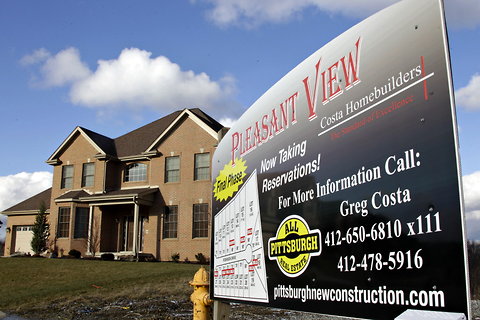er, bui Associated PressA home for sale in Pleasant Hills, Pa.
Associated PressA home for sale in Pleasant Hills, Pa.
Requiring a minimum down payment of 20 percent, or even 10 percent, on home loans would push many creditworthy borrowers into higher-cost loans or out of the mortgage market entirely, a new study says.
Possible down-payment requirements are part of a debate in Congress and among a cluster of federal regulatory agencies, as they develop new rules for mortgage lenders following the housing crash.
As part of the reforms mandated by the Dodd-Frank financial law, the agencies (including the Federal Deposit Insurance Corporation., the Federal Reserve, the Department of Housing and Urban Development and the Federal Housing Finance Agency, among others) have proposed criteria for what constitutes a reasonably safe, high-quality mortgage–a “qualified residential mortgage,” or Q.R.M., in regulatory lingo.
Lenders issuing such mortgages will be able to sell them to private investors and avoid retaining any of the risk associated with a default of the loan on their own books. Loans that don’t meet the standards will be considered riskier, so the lender will have to retain 5 percent ownership. The goal is to encourage banks to thoroughly vet a borrower’s ability to repay the loan.
The agencies have proposed, among other requirements, that mortgages must have a down payment of 20 percent to meet the definition. This has raised concerns among lenders, builders and housing advocates that such a requirement will unnecessarily hobble a healthy part of the housing market.
(Loans insured by the Federal Housing Agency, which can be obtained with small down payments, are exempt from the “qualified residential mortgage” mandates. Loans guaranteed by Fannie Mae and Freddie Mac, the government-sponsored mortgage companies that are the biggest players in the secondary mortgage market, are exempt. But the concern is that the new definition of a “safe” mortgage eventually will become the standard, applicable to loans backed by Fannie and Freddie too, said Kathleen Day, a spokeswoman for the nonprofit Center for Responsible Lending.)
To see what impact tougher rules for down payments and other criteria might have on borrowers, the University of North Carolina’s Center for Community Capital, Wayne State University and the Center for Responsible Lending examined home purchase loans issued before the housing bubble burst. In part, researchers examined mortgages issued from 2004-8 that were in good standing as of last February.
The researchers found that imposing a 10 percent down payment requirement would eliminate 38 percent of creditworthy borrowers from the traditional mortgage market and that at a 20 percent down payment threshold, 61 percent would be excluded. The report also found that such down payment requirements disproportionately affect blacks and Latinos.
The added benefit of reduced foreclosures, the study found, did not “necessarily outweigh the costs of reducing borrowers’ access” to mortgages.
Simply restricting access to the riskiest type of loans that caused big problems during the housing mess, like interest-only loans or those issued with no income documentation, would reduce defaults while making loans available to a broader pool of creditworthy borrowers, the study found.
“While higher down payments do result in fewer defaults, the payoff is small relative to the number of creditworthy households who could be shut out of the market, the study shows,” said a statement from the Center for Responsible Lending.
Do you think a mandatory 10 percent or 20 percent down payment is reasonable, even if it bars otherwise creditworthy borrowers from qualifying for a home loan?
Article source: http://feeds.nytimes.com/click.phdo?i=dbffbbe7a27f769e2f32136074a2269b
Speak Your Mind
You must be logged in to post a comment.